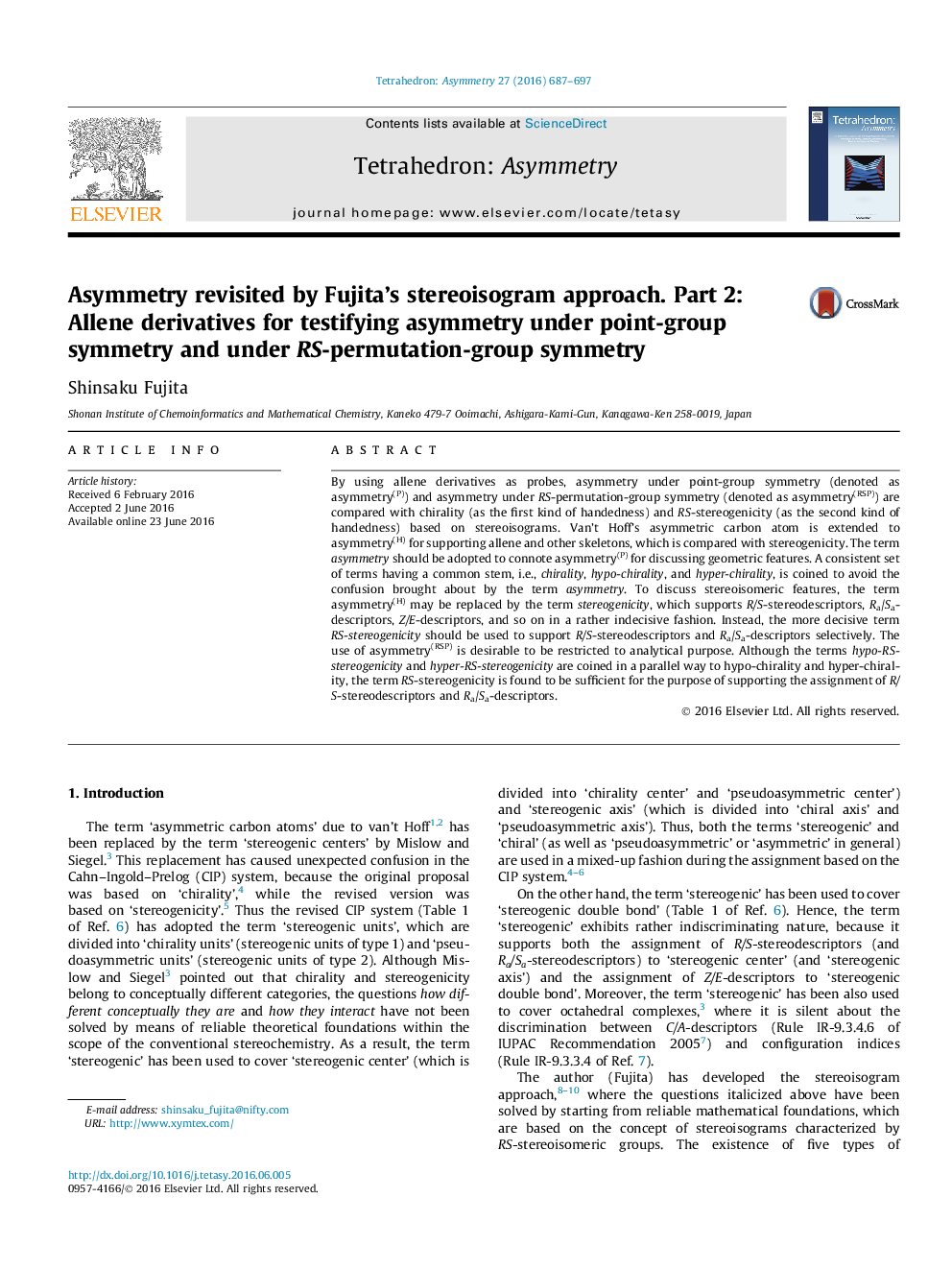| کد مقاله | کد نشریه | سال انتشار | مقاله انگلیسی | نسخه تمام متن |
|---|---|---|---|---|
| 1343351 | 1500329 | 2016 | 11 صفحه PDF | دانلود رایگان |

By using allene derivatives as probes, asymmetry under point-group symmetry (denoted as asymmetry(P)) and asymmetry under RS-permutation-group symmetry (denoted as asymmetry(RSP)) are compared with chirality (as the first kind of handedness) and RS-stereogenicity (as the second kind of handedness) based on stereoisograms. Van’t Hoff’s asymmetric carbon atom is extended to asymmetry(H) for supporting allene and other skeletons, which is compared with stereogenicity. The term asymmetry should be adopted to connote asymmetry(P) for discussing geometric features. A consistent set of terms having a common stem, i.e., chirality, hypo-chirality, and hyper-chirality, is coined to avoid the confusion brought about by the term asymmetry. To discuss stereoisomeric features, the term asymmetry(H) may be replaced by the term stereogenicity, which supports R/S-stereodescriptors, Ra/Sa-descriptors, Z/E-descriptors, and so on in a rather indecisive fashion. Instead, the more decisive term RS-stereogenicity should be used to support R/S-stereodescriptors and Ra/Sa-descriptors selectively. The use of asymmetry(RSP) is desirable to be restricted to analytical purpose. Although the terms hypo-RS-stereogenicity and hyper-RS-stereogenicity are coined in a parallel way to hypo-chirality and hyper-chirality, the term RS-stereogenicity is found to be sufficient for the purpose of supporting the assignment of R/S-stereodescriptors and Ra/Sa-descriptors.
Figure optionsDownload as PowerPoint slide
Journal: Tetrahedron: Asymmetry - Volume 27, Issues 14–15, 15 August 2016, Pages 687–697